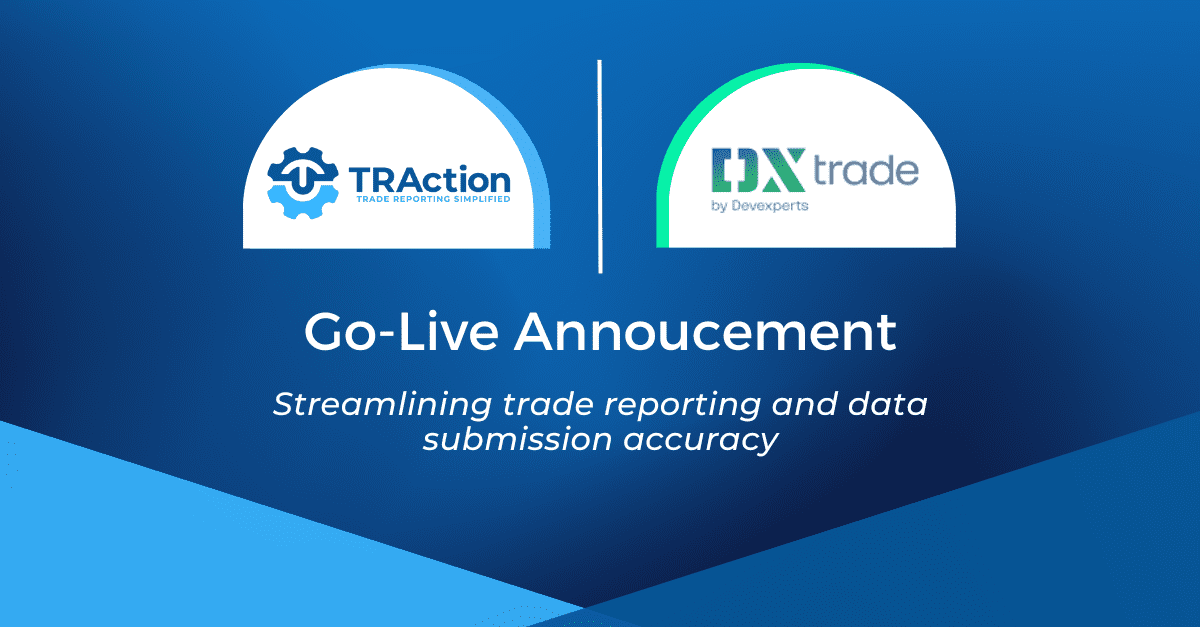ESMA spent 2024 keeping busy with its consultation process into the review of the existing MiFID and MIFIR framework in Europe. In May, July and October 2024 it released consultation papers for different elements of a review into MiFID.
The consultation from October 2024 discusses the revisions proposed to the existing technical standards on the transaction reporting framework (RTS 22) and on order book data (RTS 24). A final report of ESMA’s findings is expected to be released during 2025 – see ESMA’s letter regarding prioritisation of their 2025 deliverables which also shows the dates of originally expected timelines being delayed.
Main proposals for a revised MiFIR framework
(i) RTS 22 on Transaction Data Reporting –
- Changes to Article 26(2) regarding in-scope instruments – i.e. traded on a trading venue (TOTV): the revised MiFIR will also extend to include transactions in certain OTC derivatives referred to in Article 8a(2) of MiFIR – i.e. those OTCs that are denominated in Euro, Japanese yen, USD or GBP that are subject to clearing or centrally cleared and are any of the below:
- Broader changes to Article 26: These relate to changes on:
- RCA Definition introduced: The rules for determination of the relevant competent authority of the ‘most relevant market in terms of liquidity’ (RCA). An NCA will qualify as an RCA if it supervises:
- a regulated market (RM) with the highest turnover or, if the instrument is not traded on a RM, the multilateral trading facility (MTF) with the highest turnover;
- the issuer’s jurisdiction;
- the venue where the instrument was first admitted for trading.
- New fields: are given for the:
– ‘effective date’ with clarity on when this occurs for specific instruments;
– ‘entity subject to the reporting obligation’ which is expected to add value in specific cases where the executing and submitting entities are different to the responsible entity. - Reference of indices to benchmarks: Categories of indices are to be defined by referring to the defined ‘benchmark’ under Articles 3(1)(3) of the Benchmark Regulation.
- Other:
– Clarity on identification of the ‘date by which the transactions are to be reported’.
– Amendments to certain fields so there is alignment with EMIR (e.g. reporting direction and price) and SFTR reporting in addition to international standards.
- RCA Definition introduced: The rules for determination of the relevant competent authority of the ‘most relevant market in terms of liquidity’ (RCA). An NCA will qualify as an RCA if it supervises:
- Additional enhancements: These relate to:
- In-scope DLT: identification of in-scope DLT financial instruments.
- Orders and Managers: expanding the cases of trades that are considered as a ‘transmission of an order agreement’ under Article 4 and specific cases of portfolio and fund managers.
- Reference data: changes relevant to reference data updates in Article 27, which deals with the obligation to execute orders on terms that are most favourable to clients;
- Improvement of reporting: overall changes to certain fields to improve reporting quality and effectiveness.
- In-scope DLT: identification of in-scope DLT financial instruments.
- New and changed identifiers and New Codes:
- Trading Venue Transaction Identification Code (TVTIC): These are for venues that are executed in non-EEA venues. The non-EEA trading venue would be mainly responsible for setting up the non-EEA TV TIC code and for circulation. ESMA is considering that the code be comprised of existing information e.g. ISIN, the generating entity’s LEI, date, time and quantity information.
- Transaction identification Code (TIC): These will be introduced for off venue transactions. ESMA proposes that the market facing firm acting as the seller of the instrument should be the main party responsible in setting up the TIC code and circulating.
- Aggregate order identification code (INTC identifier): These are helpful in identifying and linking aggregated orders from multiple clients, when a buyer or seller identification code under a relevant trade is reported as INTC. The party responsible in creating this code would be the investment firm executing the trade.
- Chain Identifier: All counterparties along with the sequence of confirmation chains will have this code transmitted to them. The executing firm will need to pass the code down the chain and the firm transmitting the order would consistently use the code in the trade reports. The identifier will essentially assist in the linking of transaction reports pertaining to the same flow of executed orders.
- Distributed ledger technology (DLT): ESMA found that the use of the ISO 24165 digital token identifier was the most appropriate standard to use for financial instruments used on a blockchain or re-issued in a tokenised form. Two fields were proposed to identify the DLT “financial instrument code” and “underlying identification code” respectively and these will help link the token identifiers into MiCA.
- Trading Venue Transaction Identification Code (TVTIC): These are for venues that are executed in non-EEA venues. The non-EEA trading venue would be mainly responsible for setting up the non-EEA TV TIC code and for circulation. ESMA is considering that the code be comprised of existing information e.g. ISIN, the generating entity’s LEI, date, time and quantity information.
Exemptions: The scope for exempted transactions has been broadened to include:
financial instruments that were sold or disposed of under court order or insolvency/bankruptcy procedure; and
emission allowance trades that were auctioned on auction platforms.
The list of excluded novations will also be reduced, particularly where they are related to a clearing arrangement (i.e. more novations related to clearing under the exemption will be allowed).
(ii) RTS 24 on Order Book Data –
- Under Article 25 of MiFIR, investment firms and trading venues are to have at the disposal of NCAs, order records for 5 years. RTS 24 deals with the order book trading records kept by trading venues and the main changes are that there be provision on the details and formatting of the order data that trading venue operators are to keep pursuant to Article 25(2).
- JSON – is proposed as being the standard and format of the order book data keeping and transmission, a move away from the extensible markup language (XML) format.
- Alignment of RTS 24 (through amending the data fields in the Annex) with the RTS 22 fields.
- New fields added for:
- The categorisation of the clients and to mirror the client categories under MiFID II (Articles 30 and 24).
- date and timestamp when a trade is cancelled after both parties have validated it i.e. the validity timestamp.
For details on the FCA’s findings in its assessment of the UK MiFID reporting regime are, please see our article here.
How can TRAction assist?
If you need assistance with your trade reporting under MiFID or other reporting regimes or want to know if any of the reporting regulations impact your firm and your trade reporting, please get in touch with us.




